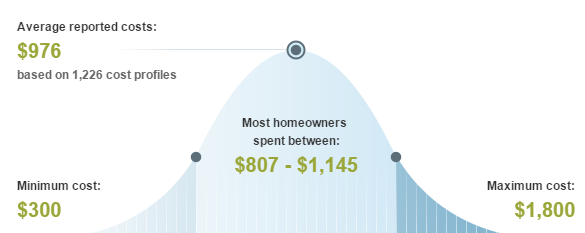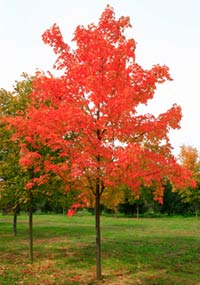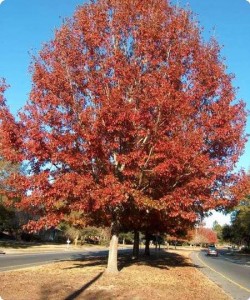Skip to a section:
- Costs – Learn about the average cost to cut, remove and handle tree stumps in Buffalo, New York.
- FAQs – Do you need the rules and regulations for trees in Buffalo? What about which ones thrive versus ones that might die within a year? Find out more information now.
- Services – Contact a local Buffalo arborist today to keep your trees in top condition.
How Much Do Tree Services Cost in Buffalo?
Home and land owners in Buffalo enjoy the seasonal beauty offered by all the different types of trees. From the first buds of spring to the full leaves in summer, changing of colors in fall and glistening snow in the winter, the trees provide beauty, protection from the elements and places for people and animals to frolic. To ensure the longevity and health of trees, regular care is essential.

How Much Does Tree Removal Cost?
The average cost to remove a tree in Buffalo is $980. Trees growing near power lines may require more to remove due to the danger. Tall trees or trees with a large diameter may cost more to remove. Keeping the wood and splitting it themselves can help homeowners reduce tree removal costs.
How Much Does Stump Removal Cost?
The average cost of removing a tree stump in Buffalo is $125.50. The final cost to the homeowner depends on the diameter of the tree trunk and how far spread out the tree’s roots are. Deep roots, widely spread roots and wide stumps cost more to remove due to increased labor. Expect to pay an average of $1.50 per inch diameter of tree stump for grinding and removal of the sawdust.
Average Cost of Tree Maintenance in Buffalo
The average cost of tree trimming and pruning in Buffalo is $464 per tree. Regular pruning promotes healthy root growth and removes dead wood, reducing the tree’s risk of disease and infestation. Trimming also helps to ensure even growth and distribution of water and sunlight to the entire plant.
Buffalo Tree Facts & FAQs
Trees are an important part of community life in Buffalo. They provide shade for summer picnics, offer a place to hang bird feeders and tire swings and they shade homes from the hot summertime sunshine. Choosing the right trees for the locale and proper timing of tree care services help ensure the trees will look their best and thrive in their location.
Tree Removal Rules & Regulations
Anyone who wishes to remove a tree from private property must contact the City of Buffalo’s official forester. Because many of the city’s trees were damaged or destroyed in severe weather in October 2006, the city is working to replant and replace damaged and dead trees that were lost on public and private properties. A dying or damaged tree located in the public right of way is purvey of the city forestry division and should be reported as quickly as possible.
The best month for tree removal in Buffalo is in March. Trees are still dormant in the late winter, which makes the job easier for tree removal crews. If a tree poses an imminent danger to a structure, power lines or the public, it should be removed as soon as permission is granted. When selecting an arborist to care for trees, look for one with professional certification and references. Local regulations for tree care and maintenance in Buffalo require that any tree service provider be licensed by the State of New York.
Trees must not be planted within 15 feet of distribution poles or grow to within 10 feet of distribution wires. Trees must not be within 15 feet of overhead transmission wires or 40 feet of transmission poles. On undeveloped properties, trees should not be planted within 60 feet of overhead power lines.
Buffalo Tree Facts
 Proper planting and care for trees planted in urban environments is necessary in order for these plants to thrive. Property owners should determine the soil and growing conditions before selecting a tree to plant. Hardiness and tolerance to snow are also factors for trees planted in Buffalo.
Proper planting and care for trees planted in urban environments is necessary in order for these plants to thrive. Property owners should determine the soil and growing conditions before selecting a tree to plant. Hardiness and tolerance to snow are also factors for trees planted in Buffalo.
The state tree of New York is the sugar maple. This tree is known for its brilliant foliage in the fall and its bountiful syrup in the spring. The winged seeds produced by the sugar maple are a favorite food of the common squirrel.
The tallest trees that grow in Buffalo include the white pine and Norway spruce, which reach heights of 60 to 100 feet at maturity. The shortest trees that commonly grow in Buffalo include the crabapple and pussy willow, which top out at around 15 feet in height and are typically used as ornamental trees.
Popular Trees
 The most popular trees in Buffalo are species that are hardy in extreme cold.
The most popular trees in Buffalo are species that are hardy in extreme cold.
- Sugar maple (Acer saccharum)
- Black walnut (Juglans nigra)
- Hybrid poplar (Populus deltoides)
- Red oak (Quercus rubra)
- Scotch pine (Pinus sylvestris)
- White pine (Pinus strobus)
- Norway spruce (Picea abies)
- Balsam fir (Abies balsamea)
Peaches, apples and pears all grow well in Buffalo. These trees will start to bear fruit after their third year of growth. Peach trees are a great choice as they are self-fruiting and it’s not necessary to plant more than one tree. Mulberries and blackberries are also good fruit tree choices for the area.
Diseases & Difficult Trees
Black walnuts are affected by walnut blight and bunch disease. Anthracnose affects black walnuts and oaks. Annosus root rot affects pines and firs. Fire blight affects crabapple, apple and pear trees. Sapstreak affects sugar maples. Powdery mildew affects oaks.
The black walnut is one of the most difficult trees to maintain in Buffalo. While the black walnut is prized for its nuts, wildlife value and the beauty of its wood, it is a high-maintenance tree that requires full sun, deep, fertile and moist soil that drains well. Black walnut is poisonous to horses. The tree also secretes a substance that inhibits the growth of many vegetables, flowers and other trees.
Plant Hardiness Zones in New York
Here is the New York plant hardiness zone map, as provided by the USDA:

Local Tree Services in Buffalo
